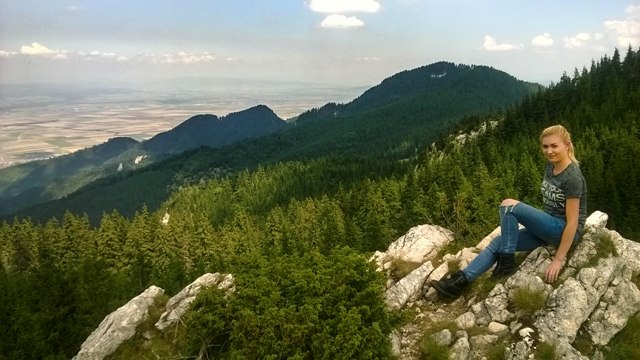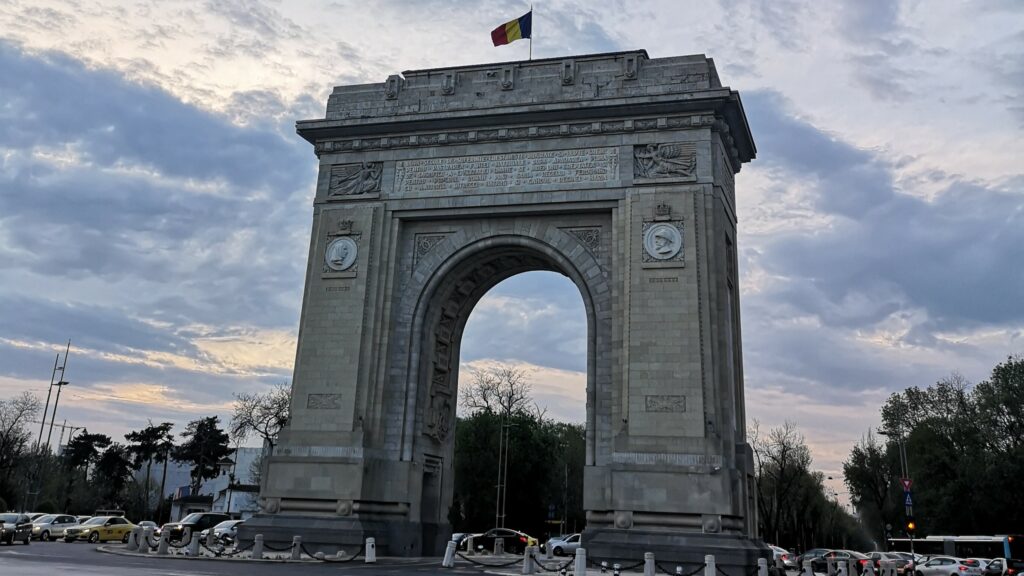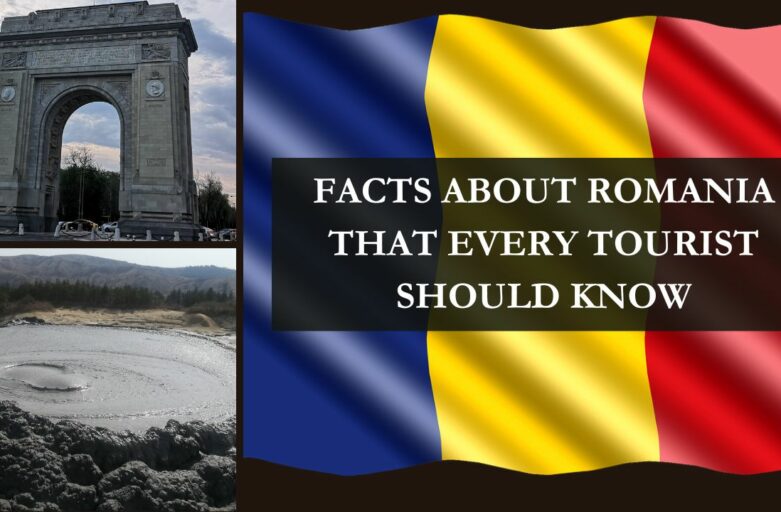Digging through the most fascinating facts about Romania, a curious traveler can shed light on the country’s turbulent past and rich cultural heritage. Going further, one can delve into the lesser-known corners of Romania, exploring its UNESCO World Heritage Sites or celebrating its notable figures that had a global impact.
And what better way to discover the most interesting facts about Romania, than to learn them from locals? Therefore, in the making of this article, I asked 20 Romanians to give me their best facts about Romania. Considering that I was also born and raised in Romania, I also contributed with my knowledge that stems from a passion for local history, geography and culture. So, ladies and gentlemen, it’s time to set aside preconceived notions and embark on an adventure that will leave you enchanted by the wonders of our country.

Geography
- Romania is a country located in southeastern Europe, with the capital in Bucharest.
- Romania is located on the 45th parallel north, which means it is halfway between the Equator and the North Pole.
- Romania has a temperate continental climate with 4 distinct seasons.
- The area of Romania is more than 2.5 times bigger than that of Portugal or Austria.
- The Carpathian Mountains take about 1/3 of the total area of the country.

Natural Attractions
- Besides the national animal, which is the lynx, Romania also has a national bird (the European Golden Eagle) and a national flower (the peony).
- The Danube is the second longest river in Europe (after Volga) and the Danube Delta is the largest wetland in Europe, which has a unique and diverse ecosystem (over 5000 species of animals discovered so far).
- The Romanian mountains are home to the largest population of brown bears in Europe. If you want to see some, you can go to the Libearty Sanctuary near Brasov or join a wildlife tour for a chance to see them in their natural habitat.
- Romania has mud volcanoes, a strange phenomenon that is not found in many places in the world. These can be found in Berca, Buzau country and as their name suggests, their craters don’t spew molten lava, but gases making their way through cold liquidy mud. Some tours have the Muddy Volcanoes on their itinerary.
- Romania has the largest salt mine in all Europe – the Slanic Prahova Salt Mine. It has a height of 54 meters, an opening of 32 meters at the basis and an opening of 10 meters at the ceiling. Book a tour from Bucharest now.
- The tallest rock sculpture in Europe is near the city of Orsova, and is visible on the banks of the Danube River. The statue represents the Dacian King Decebal and is often compared to Mount Rushmore in the USA.
- In the western part of the country, there is Scarisoara glacier, one of the largest underground glaciers in Europe and also one of the oldest glaciers on the planet.

History
- In 2002, the earliest reliably dated European modern human fossils (between 37,800 to 42,000 years old) were unearthed in southwestern Romania, specifically at Pestera cu Oase, which translates to the “Cave With Bones”.
- The ancestors of the Romanian people are the Dacians (an ancient civilization that inhabited most of the land of modern-day Romania) and the Romans, who conquered Dacia in 106 A.D.
- The country’s National Day is December 1st, which commemorates the unification of Transylvania, Bessarabia, and Bukovina with the Romanian Kingdom in 1918, which led to the formation of modern-day Romania.
- Romania is part of the European Union, Schengen zone (partially) and NATO.
- Bucharest was the first city in the world with kerosene public street lamps (1857) and Timisoara was the first European city that introduced introduce horse-drawn trams and that was illuminated with electric streets lamps. Also, Peles Castle was the first European castle powered by electricity.

Culture
- Romanian is a Latin language as a result of the conquest of Dacia by the Romans, but it also has other influences, such as Slavic or Turkish. Romanian is also the only Romance language from Eastern Europe.
- The country’s name comes from the Latin word “Romanus”, which means “citizen of the Roman Empire”.
- The name of the Romanian currency is “leu”, which means “lion”. This name comes from the Dutch lion thaler, a coin that circulated on the territory of Romania a few hundred years ago.
- Sapanta – Peri Monastery, located in Maramures region is the world’s tallest wooden church and was included on the list of the UNESCO World Heritage Sites.
- Also in Sapanta, a small village in Maramures, there is a Merry Cemetery, where crosses are painted in vivid colors and are decorated with funny texts, describing the life of the departed.
- Bucharest was also known as “Little Paris”, because of the prominent French influence from the mid 19th century to mid 20th century. This influence left its mark on many of the city’s buildings, but not many survived under the Communist regime. The most notable similarity between Paris and Bucharest is probably that both cities have a large Triumphal Arch.
- The Parliament Building of Bucharest (also known as The House of the People) is the heaviest building in the world and also the second-largest administrative building in the world, after the Pentagon.
- Many useful inventions are attributed to Romanian inventors, such as Henri Coanda (the first jet aircraft), Nicolae Constantin Paulescu (insulin), Petrache Poenaru (fountain pen), Aurel Persu (pioneer of the modern car design), Eugen Pavel (Hyper CD-ROM) or Emil Racovita (the founder of biospeology)
- The young Romanian athlete Nadia Comaneci was the first ever gymnast to score a perfect 10 at the Olympics.
- Romania has only one circular village: Charlottenburg (or Sarlota). Built by German settlers in the 18th century, the village is located close to Timisoara.
Other Random Facts
- King Charles loves spending his holidays in Romania and he even owns 4 houses in Transylvania.
- Romania is in 5th place on the list of countries with the fastest Internet connections via fixed broadband (pair this with the fact that Romania is relatively a cheap country, and no wonder so many digital nomads are coming here!)
In conclusion, Romania stands as a multifaceted destination brimming with captivating history, vibrant culture, and stunning natural beauty. From the ancient Dacian civilization to the breathtaking landscapes of the Carpathian Mountains and the Danube Delta, Romania offers a treasure trove of experiences waiting to be discovered.
